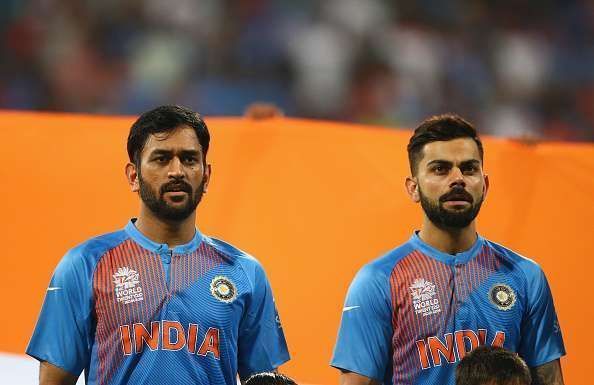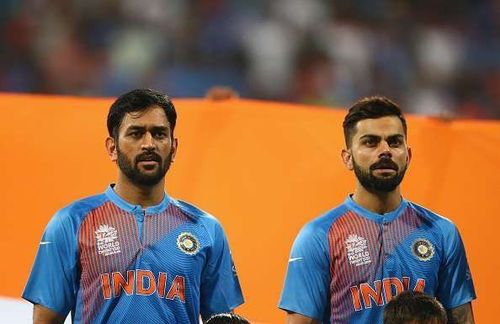
#10YearChallenge: How white-ball cricket changed globally in the last decade

In recent years, all three formats of the game, the Tests, ODIs, and T20s are being played at high frequency without any significant gap between formats. To excel in all three formats demands an exceptional skill-set and fitness level from a player. White ball cricket has undergone several changes over the years. It's not the game that it used to be even a decade ago.
Here are some of the changes to the game:
1. High scoring rate and big totals are now common
Scores in excess of 300 are no longer a big deal in ODI cricket. Over the last decade, the number of 300-plus totals has risen significantly, and team India have been Picasso of posting big totals. As per stats since 2009, the team have scored 300-plus score in every 5th match they played. After the 2015 World Cup, England holds the record for most 300-plus scores in ODIs.

Not only team scores have been high, but also individual scores have seen a rise too. It all started with the Little Master, Sachin Tendulkar who scored first ever ODI double hundred in 2010. Since then eight players till date have scored 200-plus scores in an ODI innings.
2. Fitness level of players
The biggest difference in world cricket from last decade has to be the rise in the fitness level of the players.
All the teams nowadays have got a specialized trainer, a physiotherapist, and a fielding coach in their ranks. The diet plan, gym sessions, training sessions are all being planned and monitored by the specialist. Certain teams have introduced minimum threshold of fitness by introducing fitness test such as Yo-Yo endurance test.
Fitness level backed by impeccable training drills has led to massive improvement in fielding standards of the teams. The best example of such improvement is team India, who once were deemed to be poor fielding side, now have risen from their ruins to become one of the best if not the best fielding side in the world.
3. Emergence of T-20 leagues across the globe
With T20 cricket becoming an attraction among global audience in last decade, it also saw the emergence of T20 franchise cricket tournaments.
Most followed leagues in the world are:-
Indian Premier League (India) - Started in 2008
Big Bash League (Australia) - Started in 2011
Caribbean Premier League (West Indies) - Started in 2013
Mzansi Super League (South Africa) - Started in 2018
Pakistan Super League (Pakistan) - Started in 2015
Bangladesh Premier League (Bangladesh) - Started in 2012
The cash-rich and flamboyant leagues have not only attracted a crowd but also the players with a hefty sum of money going into their pockets.
On the one hand, the leagues have been successful in growth and development of domestic players, but on another hand created numerous controversies over the years.
4. Different players for different formats
Each format of the game requires specific players with specialised roles. Not all players have met such requirement, and thus have limited themselves to play only certain formats of the game. They are not many players in world cricket who play all three formats and those who play are given time to time rest to recover from fatigue.
In the early 2010s, England team first introduced world cricket to the concept of different captains across different formats. The same concept has been adopted by almost all cricket playing nations today.
Many familiar names like Eoin Morgan, Chesteshwar Pujara, David Miller, Jason Roy, Dean Elgar, Yuzvendra Chahal are known to play only one (either white-ball or red-ball) format of the game.
5. Wrist spinners taking over from finger spinners
With the introduction of new rules in the game, like powerplays and two new balls (one from each end), it's a win-win scenario for the batsman.
The teams are scoring big runs, and therefore lies a necessity for bowling side to pick up wickets especially in middle overs to restrict the opposition to a low score. But with two new balls getting introduced, the pitch isn't offering required zip and turn to the new or semi-new ball, which has made hard for finger spinners to pick wickets.
Thus, finger spinners like R. Ashwin, Ashton Agar, Moeen Ali have struggled in recent times. This very reason saw Ashwin and R. Jadeja make way for wrist spinners like Chahal and Kuldeep in limited over format. It is not just the case with Indian team, but every team has at least one wrist spinner in their current squad - Imran Tahir (SA), Adil Rashid (Eng), Lakshan Sandakan (SL), Adam Zama (Aus), Ish Sodhi (NZ), Shadab Khan(PAK), Rashid Khan (AFG).